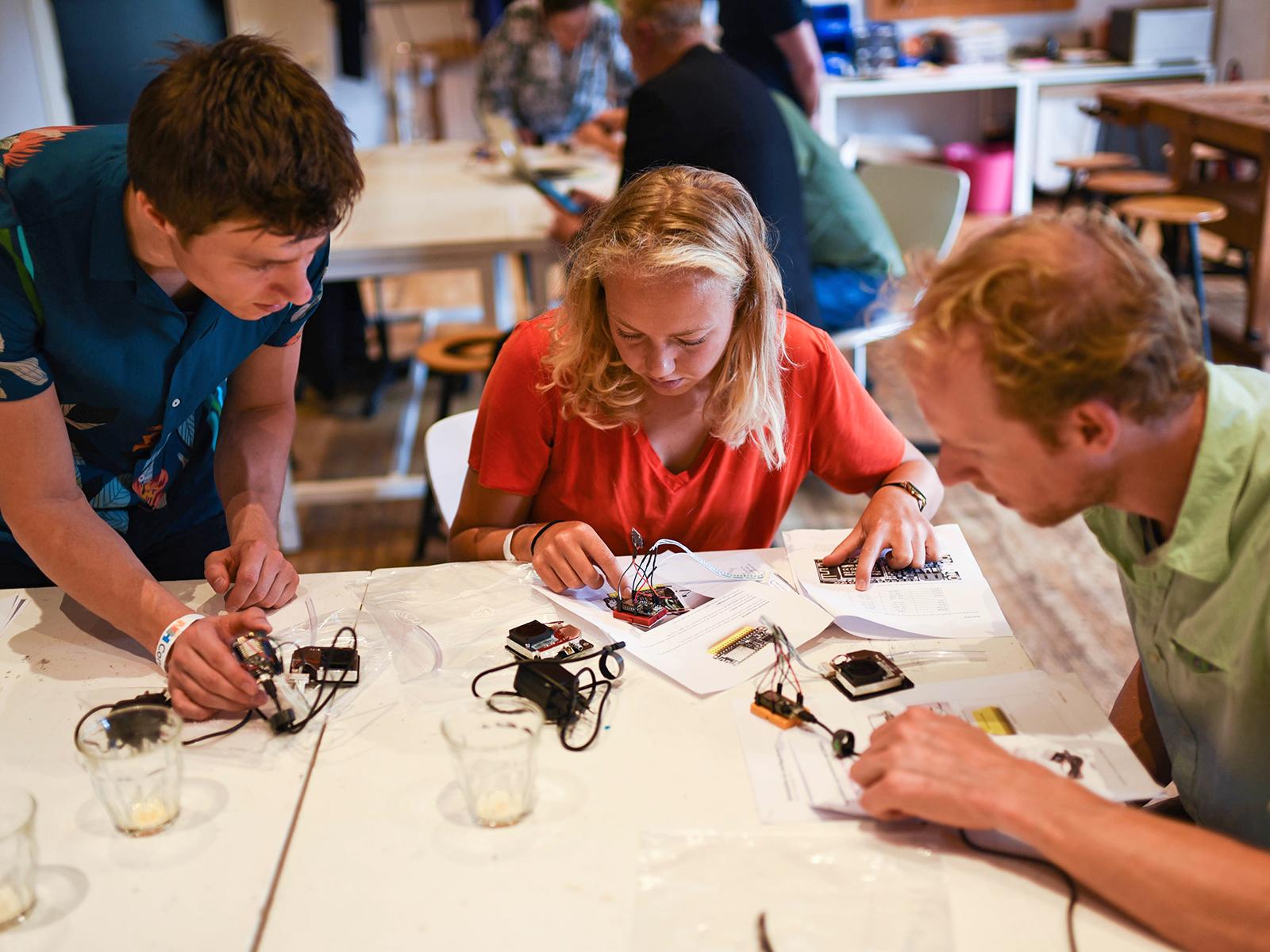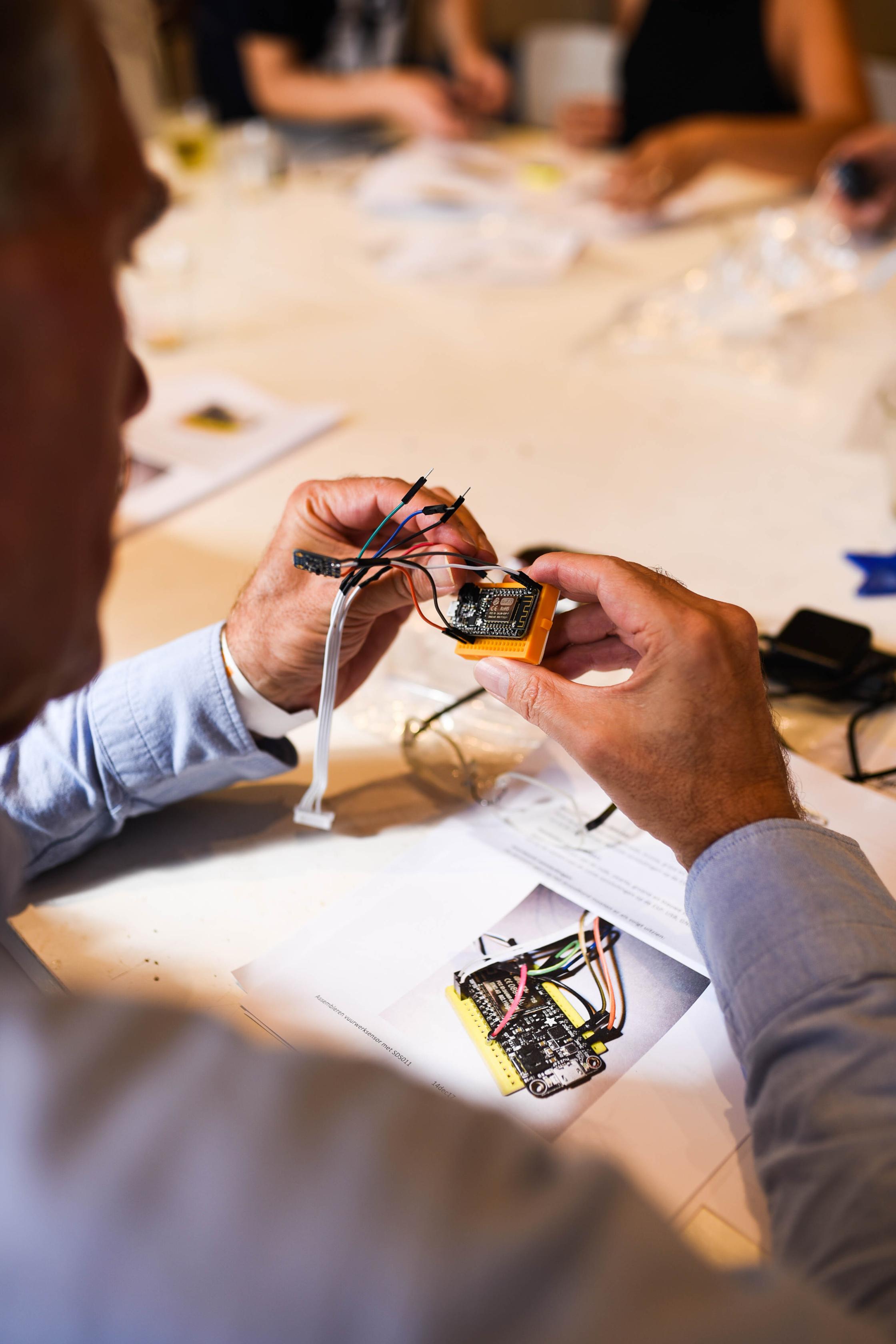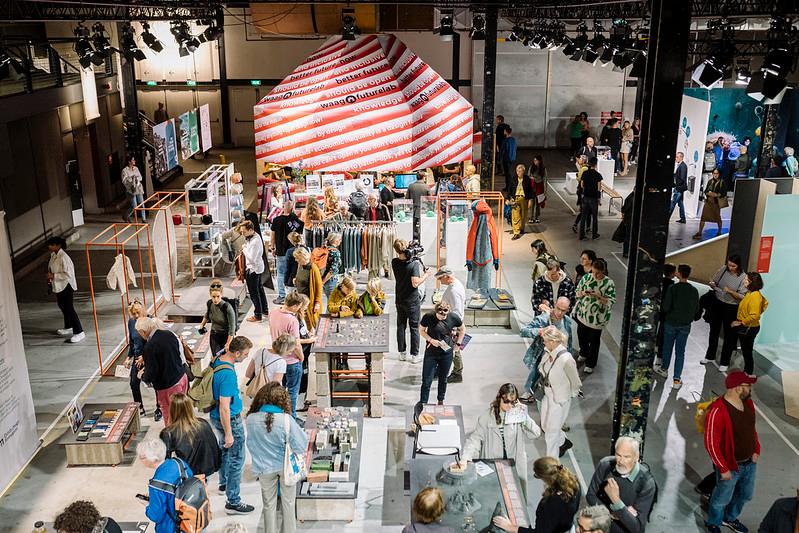A recap of the Transforming Citizen Sensing conference that took place at Waag in December. How do we make sure citizens get access to air quality data on a global level?
By Hannah Grijns
Globally, air pollution is a pressing issue, for environmental as much as personal health reasons. In a majority of places, official (government) data are insufficient to fully inform citizens on local air quality. Data gathered by citizens themselves, through the use of different kinds of air quality sensors, are a promising source of information for affected communities. This form of citizen science can be a valuable addition to official measurements, as well as to the empowerment of citizens and in order to campaign for political action.
Waag recently led a two-day conference on open source air quality sensors: Transforming Citizen Sensing. The event took place completely online and it attracted more than sixty participants from all over the world. The central goal was to bring together the network on citizen initiatives that use sensor technology, in order to learn from existing use cases and the input of experts. Co-organized by SODAQ, an organisation specialised in developing open source sensor technology, this conference was the formal kick-off of a longer series of events (to be continued as design sprints starting early 2021) with the goal of eventually co-creating the ideal air quality sensor for citizens worldwide – across borders, because air pollution is not limited to one geographical area. The results of the conference and the design drawings will be shared at a later stage.
Open-source hardware
The Transforming Citizen Sensing conference is part of Open Next, a European project that aims to bridge the gap between communities and companies by highlighting the value of open source technology, in particular within the maker movement. The wider adoption of open source hardware (OSH) is a key component of the Open Next project, building on lessons learned from the open source software movement. Not only should hardware be transparent, accessible and reproducible, but OSH also focuses on a participatory and community-driven design process. The increased use of OSH has implications for current business models: actively involving customers in the design of end product has benefits for a company, but it requires a different mindset and new economic incentives. OSH is also relevant to sensor technology; currently, consumers often have very limited say in the design and production processes of sensors. Waag has been involved in a couple of projects that try to tackle this problem, including Hollandse Luchten (through the so-called ‘HoLu-sensor’) and the Snifferbike (in close collaboration with SODAQ). Building on these projects and other initiatives, the aim of the conference was thus to further enhance concern-driven innovation (taking citizens’ and communities’ concerns as starting point) and collaborative product creation of an open source citizen sensor.
Use cases and challenges
Each conference day consisted of a number of presentations on existing initiatives in air quality measurements, ranging from a global citizen sensing platform (Sensor.Community) and the case of indoor CO2 sensors, to a bucket community monitoring tool in South Africa (SDCEA) and citizen science combined with participatory urban planning in Scandinavia (NordicPATH). The use cases illustrated how varied the use of sensor technology can be, expanding on ways to set up citizen sensing projects and practical challenges that come with different contexts. This plenary part was then followed by interactive sessions (on Miro), during which participants split up into break-out groups to first formulate concrete design challenges based on shared concerns and identified needs, and subsequently tried to tackle these challenges by using the discussed cases as inspiration.
The central design challenge that was formulated was: ‘How can we use sensing tools to put pressure on policy making?’ This links to a couple of recurring challenges that were highlighted through the different use cases, including: how does one secure long-term citizen engagement in a citizen science project (versus focusing on a short-term campaign)? How does one collect and share data in areas that do not have a stable internet connection or cannot always rely on electricity? In a lot of countries, the government actively opposes air quality measurement and citizens are in danger of oppression if they try to openly share information; how does one take into account the local context when setting up a citizen sensing project? And, relevant to many cases: how does one make the sensors affordable and accessible to a wider audience, especially when there is a lack of official funding? A number of dynamics are at play regarding the financial aspect: many citizens, particularly those living in poorer neighborhoods that are often most affected by contamination from surrounding industrial zones, cannot afford their own sensor (which generally costs at least €40); yet handing out sensors for free takes away citizens’ sense of ownership and commitment. Furthermore, for official measurement stations it is often the case that the sensors have been placed, but there is a lack of money for monitoring incoming measurements or for storing and sharing data. How can these processes be connected?
'The burden of collecting information should not fall on communities; instead, citizen science should push the authorities to undertake their responsibility in environmental governance.'
Moving forward
The second day of the conference was especially aimed at coming up with solutions to these challenges collaboratively. Through the use of Miro boards, participants visualized practical ways to go forward. For instance, the use of Bluetooth and of LoRa (a long range wide-area network) can allow devices (i.e. sensors) to communicate without access to 4G or WiFi, and rechargeable batteries that work on solar power have potential for areas with an unreliable electricity grid. Gamification through an active (online) community platform or an engaging sensor interface could lead to long-term commitment by users. Another tool to raise awareness and secure commitment among the general public is by creating ‘data stories’, as used by the London-based Airkit. Regarding financial challenges, one proposition (as applied in Bogotá) is to have groups of citizens voluntarily ‘chip in’ to pay for sensors in low-income neighborhoods. Another option is to work with larger sponsor organizations to partly subsidize the cost of sensors, while still actively involving citizens in the mounting of their sensors to heighten their sense of responsibility.
One key take-away all participants agreed on, is that citizen science should not replace or compete with official measurements. Data collected by citizens can be of huge value, especially in countries where there is little top-down political or economic incentive for measurements. Nonetheless, as accurately formulated by one of the speakers, ‘the burden of collecting information should not fall on communities’; instead, citizen science should push the authorities to undertake their responsibility in environmental governance. If anything, the conference highlights the importance of open (source) citizen sensing projects, to learn from and collaborate with the many existing initiatives wherever possible. This way, we can break the current top-down monopoly on information on air quality, and hopefully collaboratively develop a prototype for a completely open source, affordable, high-quality air sensor that is applicable worldwide. The process of developing a prototype for this sensor will be continued in a number of interactive design sprints in January 2021. Participants in the conference have received an email on how to join these design sprints.


